Top 10 Shanghainese Dishes
Shanghai, a vibrant metropolis at the heart of China's Yangtze River Delta, is a melting pot of cultures, and its cuisine is no exception. Rooted in the delicate traditions of Jiangnan (the region south of the Yangtze River) and enriched by global influences, Shanghai's food scene offers a tantalizing blend of flavors, textures, and historical depth. Below, we explore 10 iconic dishes that define the city’s culinary identity, along with cultural tips to help you savor Shanghai like a local.
10 Must-Try Shanghai Classic Dishes
1. Xiaolongbao (Shanghai Soup Dumplings)
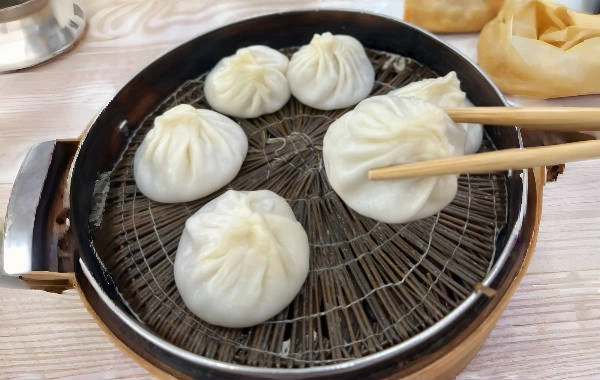
Overview: Often dubbed "drinkable soup dumplings," xiaolongbao are Shanghai’s most famous culinary export. These delicate parcels feature a thin, translucent wrapper encasing a succulent pork filling and a pocket of sizzling, savory broth.
Key Features:
- Wrapper: Paper-thin yet resilient, allowing the dumpling to hold its shape while revealing the filling inside.
- Broth: Made by simmering pork bones, skin, and aromatic spices for hours, then chilling the gelatinous stock into a "meat jelly" that melts during steaming.
- Flavor: Balanced sweetness from the pork and umami depth from the broth, often enhanced with a splash of ginger-infused vinegar.
How to Eat: Gently pick up the dumpling with chopsticks, dip it in black vinegar with slivers of ginger, and take a small bite to sip the broth before devouring the rest.
Recommended Restaurants: - Nanxiang Steamed Bun Shop (Yuyuan Garden): A century-old institution known for its original recipe.
- Jiajia Tangbao (Huanghe Road): Famous for its crab-infused xiefen xiaolongbao (see below).
2. Shengjianbao (Pan-Fried Pork Buns)
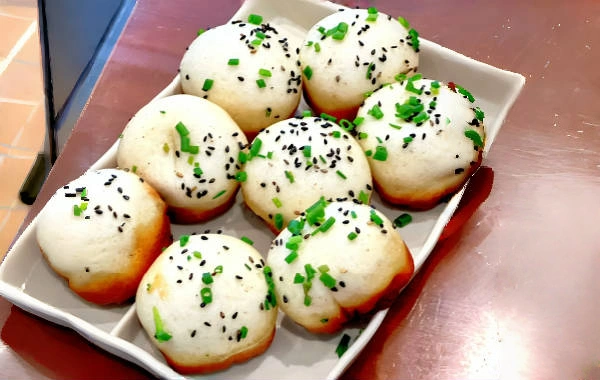
Overview: A breakfast staple, shengjianbao are pan-fried until the bottoms turn golden and crispy, while the tops remain soft and pillowy.
Key Features:
- Texture: Crispy, caramelized bottom contrasts with the tender, juicy filling.
- Filling: Ground pork mixed with soy sauce, sugar, and a touch of ginger, often with a gelatinous broth that bursts when bitten.
- Serving: Topped with sesame seeds and chopped green onions, served with vinegar or chili oil for dipping.
Cultural Note: Locals often enjoy shengjianbao with a bowl of congyou banmian (scallion oil noodles) for a hearty morning meal.
Recommended Restaurants: - Da Hu Chun (Sichuan Middle Road): A hole-in-the-wall spot with a cult following.
- Xiao Yang Sheng Jian (Chain): Consistently good quality across multiple locations.
3. Hongshaorou (Braised Pork Belly)
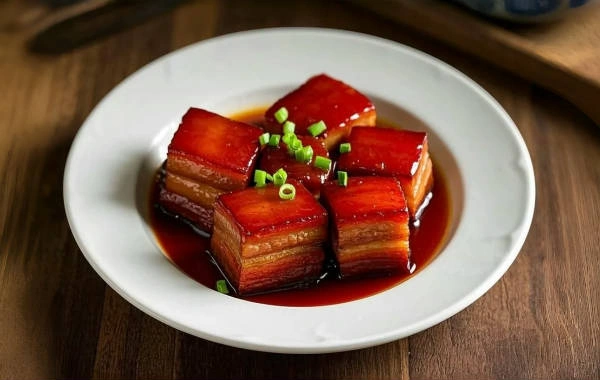
Overview: A quintessential Shanghainese dish, hongshaorou (literally "red-braised pork") is a testament to the city’s love for "thick and red sauce" (nongyou chijiang)—a sweet-savory glaze made from soy sauce, sugar, and spices.
Key Features:
- Meat: Pork belly is slow-braised until the fat melts like butter, leaving the meat tender and the skin gelatinous.
- Sauce: A glossy, caramelized reduction that clings to the meat, with a balance of sweet (from rock sugar) and savory (from soy sauce).
- Variations: Some recipes wrap the pork in a soft-boiled egg or tripe for added texture.
Recommended Restaurants: - Lao Zhengxing Restaurant (Fuzhou Road): A historic eatery serving classic hongshaorou.
- Lanxin Restaurant (Jinxian Road): Known for its melt-in-the-mouth pork and traditional techniques.
4. Paigu Niangao (Pork Ribs with Sticky Rice Cake)
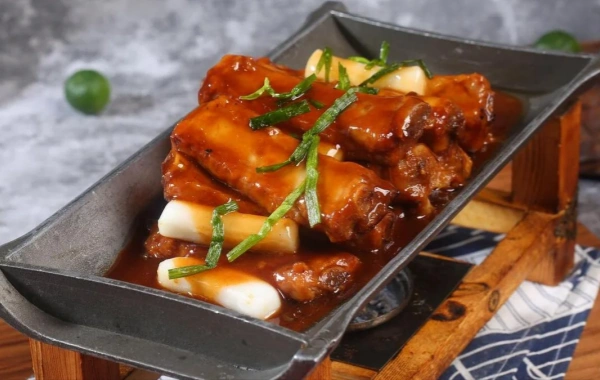
Overview: A nostalgic favorite, this dish pairs crispy, battered pork ribs with soft, chewy sticky rice cakes (niangao), all drizzled in a sweet-savory glaze.
Key Features:
- Ribs: Deep-fried to a golden crisp, with meat that falls off the bone.
- Niangao: Made from glutinous rice, these cakes absorb the sauce and become irresistibly soft.
- Flavor: A harmony of sweet (from sugar and soy sauce) and savory (from the pork and fermented black beans).
Cultural Note: Paigu niangao is a common childhood memory for Shanghainese, often enjoyed during family gatherings.
Recommended Restaurant: Xiandelai Pork Ribs and Rice Cake (Yunnan South Road): A specialist shop with a loyal local following.
5. Xiefen Xiaolongbao (Crab Roe Soup Dumplings)
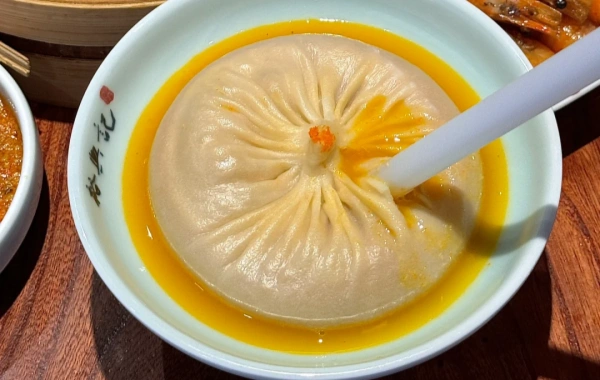
Overview: A seasonal upgrade of the classic xiaolongbao, this version uses fresh crab roe and crab meat for a luxurious twist.
Key Features:
- Filling: A blend of crab roe (which gives the broth a golden hue) and crab meat, mixed with pork for richness.
- Seasonality: Best enjoyed in autumn when hairy crabs (da zha xie) are in peak season.
- Flavor: Intensely briny and sweet, with a subtle umami depth from the crab.
Recommended Restaurants: - Jiajia Tangbao (Huanghe Road): Known for its ultra-rich crab broth.
- Lvbolang (Yuyuan Garden): A historic spot offering a refined take on crab dumplings.
6. Congyou Banmian (Scallion Oil Noodles)
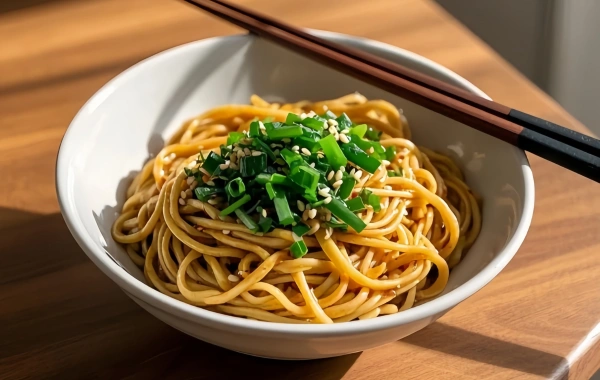
Overview: A humble yet beloved dish, congyou banmian (scallion oil noodles) showcases the Shanghainese mastery of simplicity.
Key Features:
- Noodles: Chewy, hand-pulled wheat noodles boiled to perfection.
- Sauce: A fragrant mix of scallions fried in oil until crispy, mixed with soy sauce, sugar, and a touch of MSG.
- Toppings: Often garnished with dried shrimp, crispy pork floss, or a soft-boiled egg.
Cultural Note: This dish is a popular breakfast or late-night snack, often paired with a side of zifan tuang (corn balls, see below).
Recommended Restaurants: - Lao Jishi Restaurant (Tianping Road): A no-frills spot with decades-old scallion oil recipes.
- Lane Small Wonton Restaurant (Weihai Road): Famous for its silky noodles and aromatic scallion oil.
7. Babao Ya (Eight-Treasure Duck)
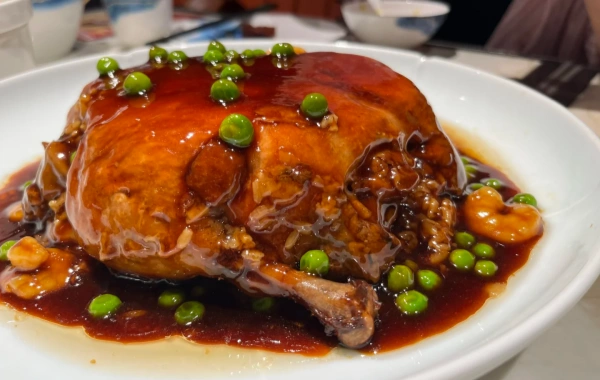
Overview: A grand banquet dish, babao ya (eight-treasure duck) is a whole duck stuffed with eight auspicious ingredients, then steamed to perfection.
Key Features:
- Filling: A mix of glutinous rice, lotus seeds, ham, chestnuts, mushrooms, and dried fruits, seasoned with soy sauce and sugar.
- Texture: The duck meat is tender and juicy, while the stuffing is soft and sweet.
- Symbolism: The "eight treasures" represent prosperity and good fortune, making this a popular dish for celebrations.
Recommended Restaurants: - Shanghai Old Restaurant (Fuyou Road): A historic institution serving traditional babao ya.
- Dexing Restaurant (Guangdong Road): Known for its meticulously prepared stuffed duck.
8. Youbao Xia (Fried Shrimp)
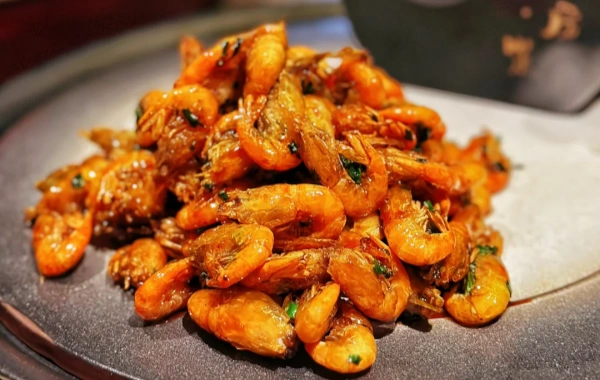
Overview: A test of a chef’s skill, youbao xia (fried shrimp) features small river shrimp fried until the shells are crispy, then tossed in a sweet-sour sauce.
Key Features:
- Texture: The shrimp shells become crunchy and edible, while the meat inside remains tender.
- Sauce: A glossy glaze made from sugar, vinegar, and soy sauce, with a hint of ginger and garlic.
- Serving: Often sprinkled with sesame seeds and served with a side of steamed rice.
Cultural Note: Locals love to eat the shrimp whole, shells and all, for the full crispy experience.
Recommended Restaurants: - Ruifuyuan (Maoming South Road): A hidden gem known for its perfectly fried shrimp.
- Laojishi Restaurant (Multiple Locations): A reliable chain with consistent quality.
9. Xianrou Yuebing (Fresh Meat Mooncake)
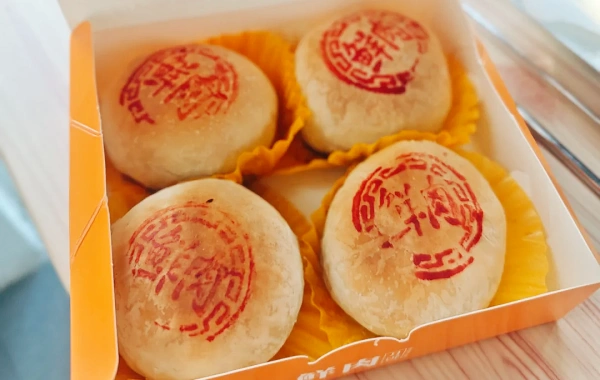
Overview: Unlike the sweet mooncakes of other regions, Shanghainese xianrou yuebing are savory, with a flaky pastry filled with juicy pork.
Key Features:
- Crust: A buttery, multi-layered pastry that shatters with each bite.
- Filling: Ground pork mixed with soy sauce, sugar, and a touch of ginger, often with a gelatinous broth for extra juiciness.
- Seasonality: A must-have during the Mid-Autumn Festival, with lines forming hours before opening.
Recommended Restaurants: - Guangmingcun Restaurant (Huaihai Middle Road): A legendary bakery with a century-old recipe.
- Taikang Food (Nanjing East Road): Famous for its long queues and irresistible mooncakes.
10. Zifan Tuang (Corn Balls)
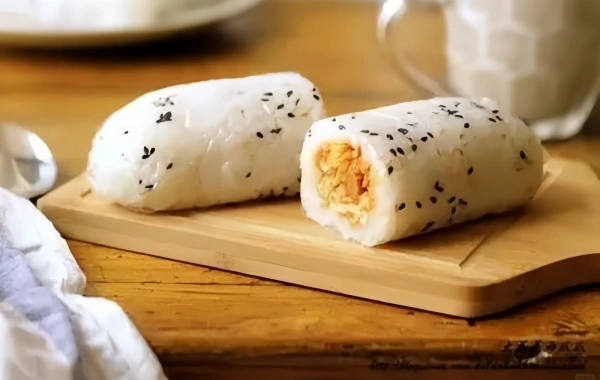
Overview: A beloved breakfast item, zifan tuang (corn balls) are glutinous rice balls wrapped around a crispy youtiao (fried dough stick), plus savory or sweet fillings.
Key Features:
- Texture: Soft, chewy rice balls contrast with the crunchy youtiao.
- Fillings: Traditional options include pork floss, preserved mustard greens (zha cai), or sweet red bean paste.
- Serving: Often wrapped in newspaper (a nostalgic touch) and eaten on the go.
Cultural Note: Known as one of the "Four Great Kings" of Shanghai breakfast, along with shengjianbao, congyou banmian, and xianrou yuebing.
Recommended Restaurants: - Shen Dacheng (Nanjing East Road): A classic spot with a wide variety of fillings.
- Xiao Shaoxing (Yunnan South Road): Famous for its savory pork floss and crispy youtiao.
Shanghai food Culture: Tips for Authentic Experiences
1. The "Thick and Red Sauce" Philosophy
Shanghainese cuisine is defined by its love for nongyou chijiang (thick and red sauce)—a sweet-savory glaze made from soy sauce, sugar, and spices. This sauce is the backbone of dishes like hongshaorou (braised pork) and paigu niangao (pork ribs with rice cake), giving them their signature glossy, caramelized finish. Pair these dishes with a light drink, like jasmine tea or a crisp lager, to balance the richness.
2. Seasonal Flavors: A Year-Round Culinary Journey
Shanghai’s cuisine follows the rhythm of the seasons, with each season offering unique ingredients and dishes:
- Spring: jianyuxun (pickled pork belly with bamboo shoots), a refreshing dish to wake up the palate after winter.
- Summer: lengmian (cold noodles) tossed with scallion oil or peanut sauce, perfect for hot days.
- Autumn: da zha xie (hairy crabs) from Yangcheng Lake, steamed and served with ginger vinegar.
- Winter: yangrou tang (mutton soup), a warming broth with tender lamb and coriander, ideal for cold nights.
3. Exploring the Streets and Alleys
Authentic Shanghai flavors are often found in the city’s historic old towns and narrow lanes (longtang):
- Yu Garden: A must-visit for classic snacks like xiaolongbao and zifan tuang, with vendors selling treats from wooden carts.
- Tianzifang: A trendy area with a mix of old and new, offering both traditional snacks and modern cafes.
- Small Alley Shops: Avoid tourist traps and seek out unassuming spots with long lines of locals—these are often the best.
4. Breakfast: The Most Important Meal
Shanghainese take breakfast seriously, and the city’s morning streets are alive with the aroma of shengjianbao, congyou banmian, and zifan tuang. For a true local experience, wake up early and join the crowds at a neighborhood breakfast spot—you’ll be rewarded with piping-hot, freshly made dishes.
5. Sweet Endings
No meal is complete without a sweet treat. Shanghai’s desserts range from traditional tangyuan (glutinous rice balls filled with sesame or red bean) to modern creations like luobo si bing (turnip cake) or douhua (silken tofu pudding). Look for street vendors selling chou doufu (stinky tofu) or jian dui (sesame balls) for a quick, sweet snack.
Final Thoughts: Savor Shanghai Slowly
Shanghai’s culinary scene is a reflection of its history—a blend of tradition and innovation, local and global. To truly experience it, venture beyond the tourist hotspots and explore the city’s neighborhoods, where generations-old recipes are still being perfected. Whether you’re slurping a bowl of scallion oil noodles or savoring a crispy youbao xia, each bite is a journey through Shanghai’s rich cultural tapestry.
Recommended Itinerary:
Contact Us
What Our Clients Say?
Based on 10,000+ traveler reviews













